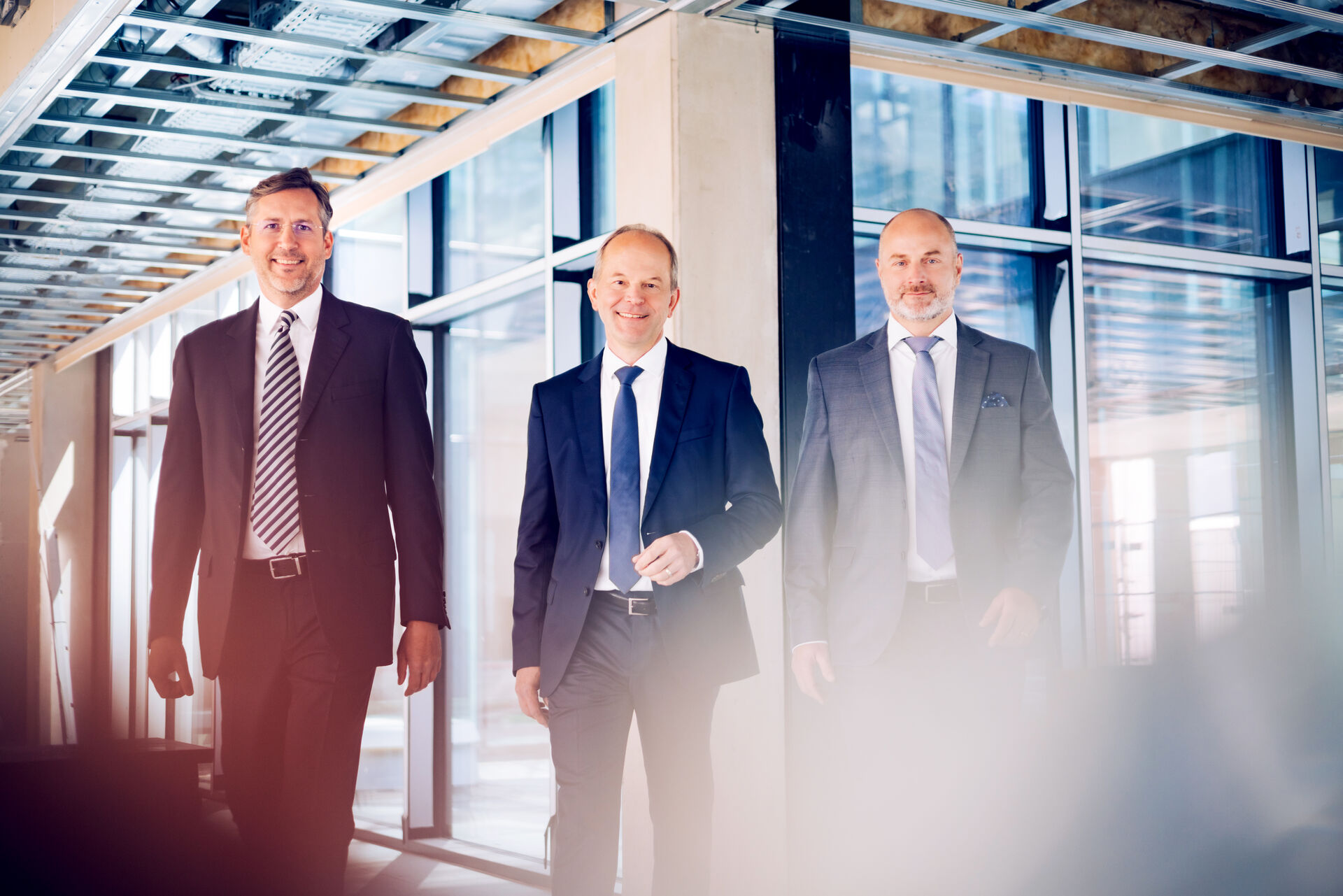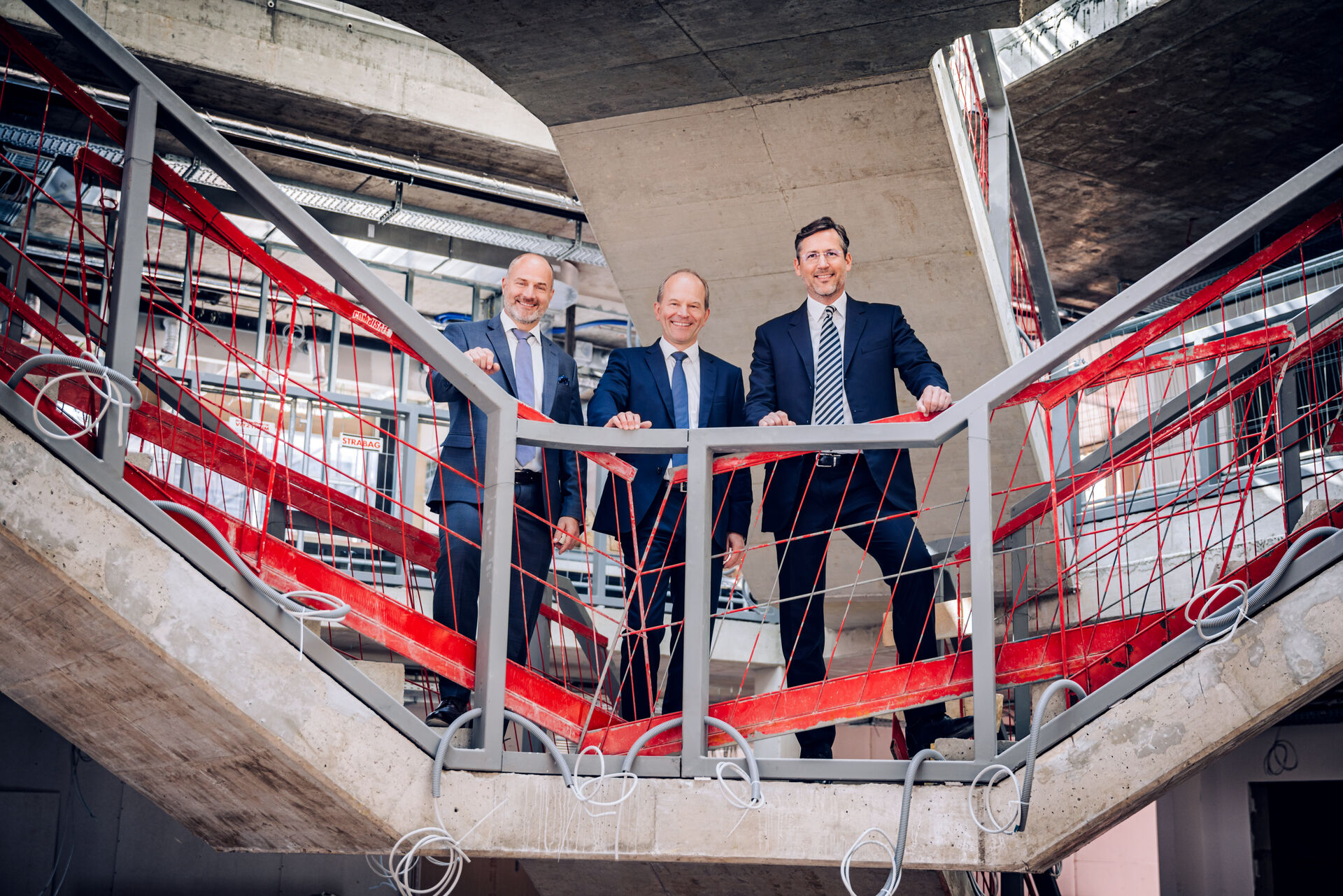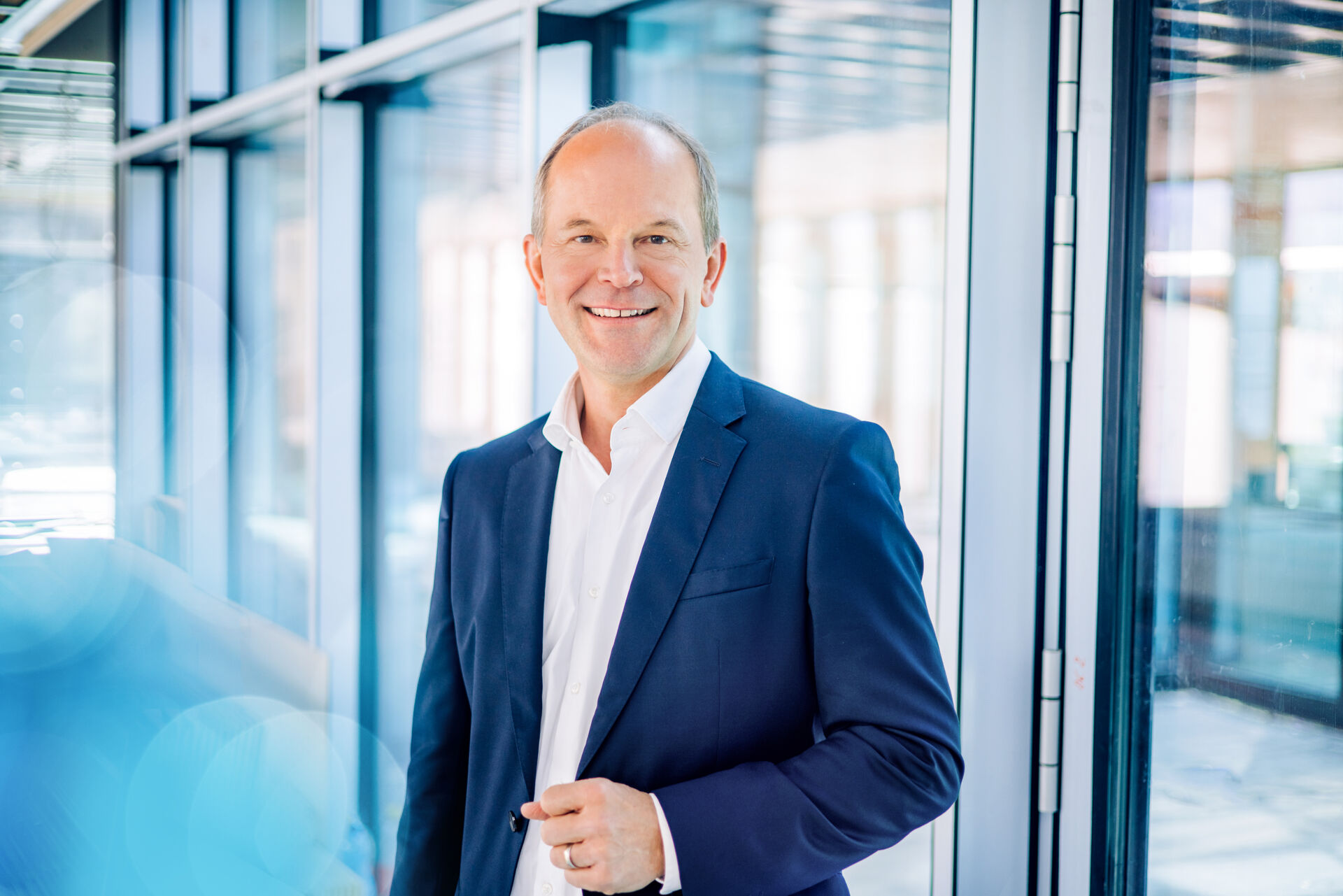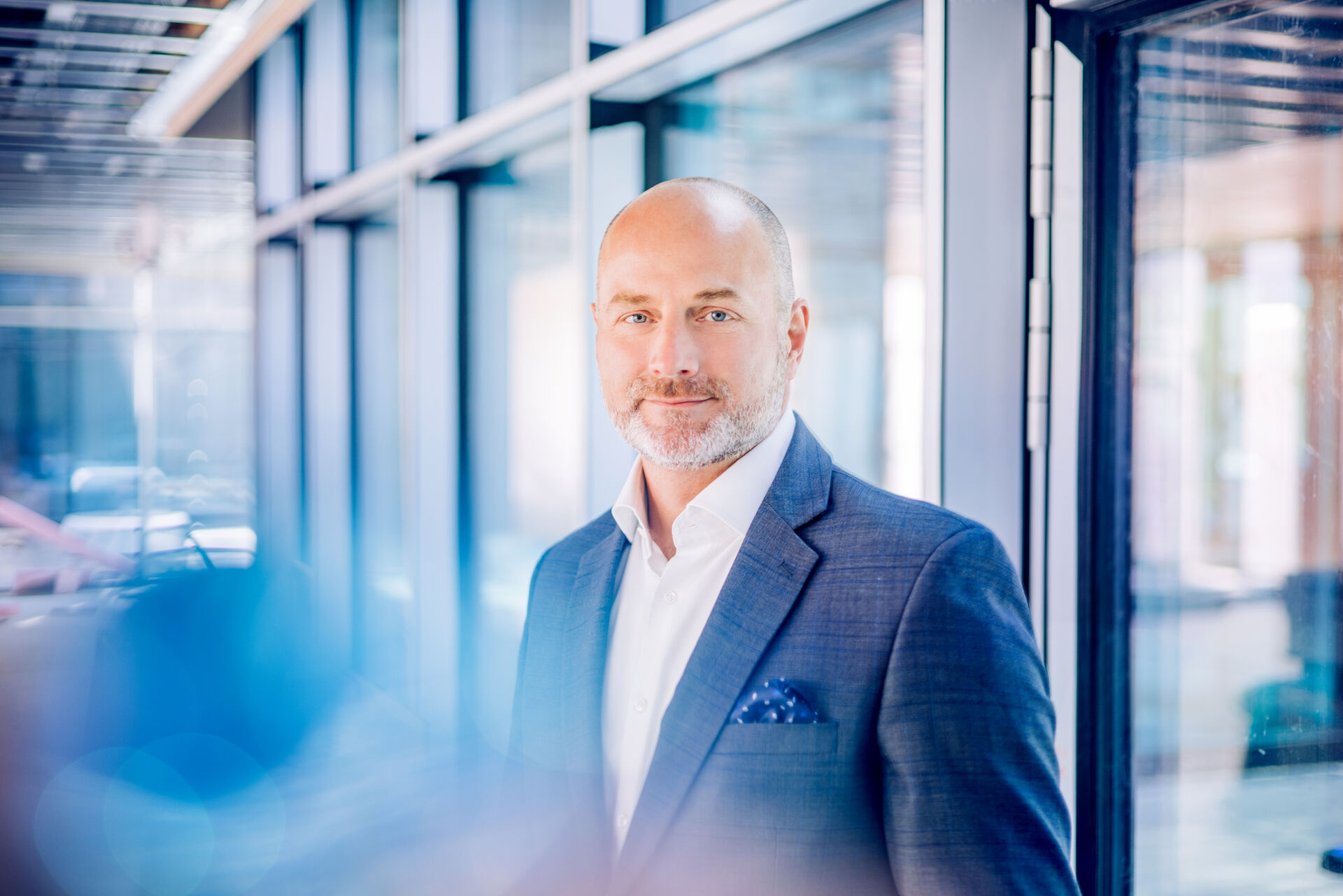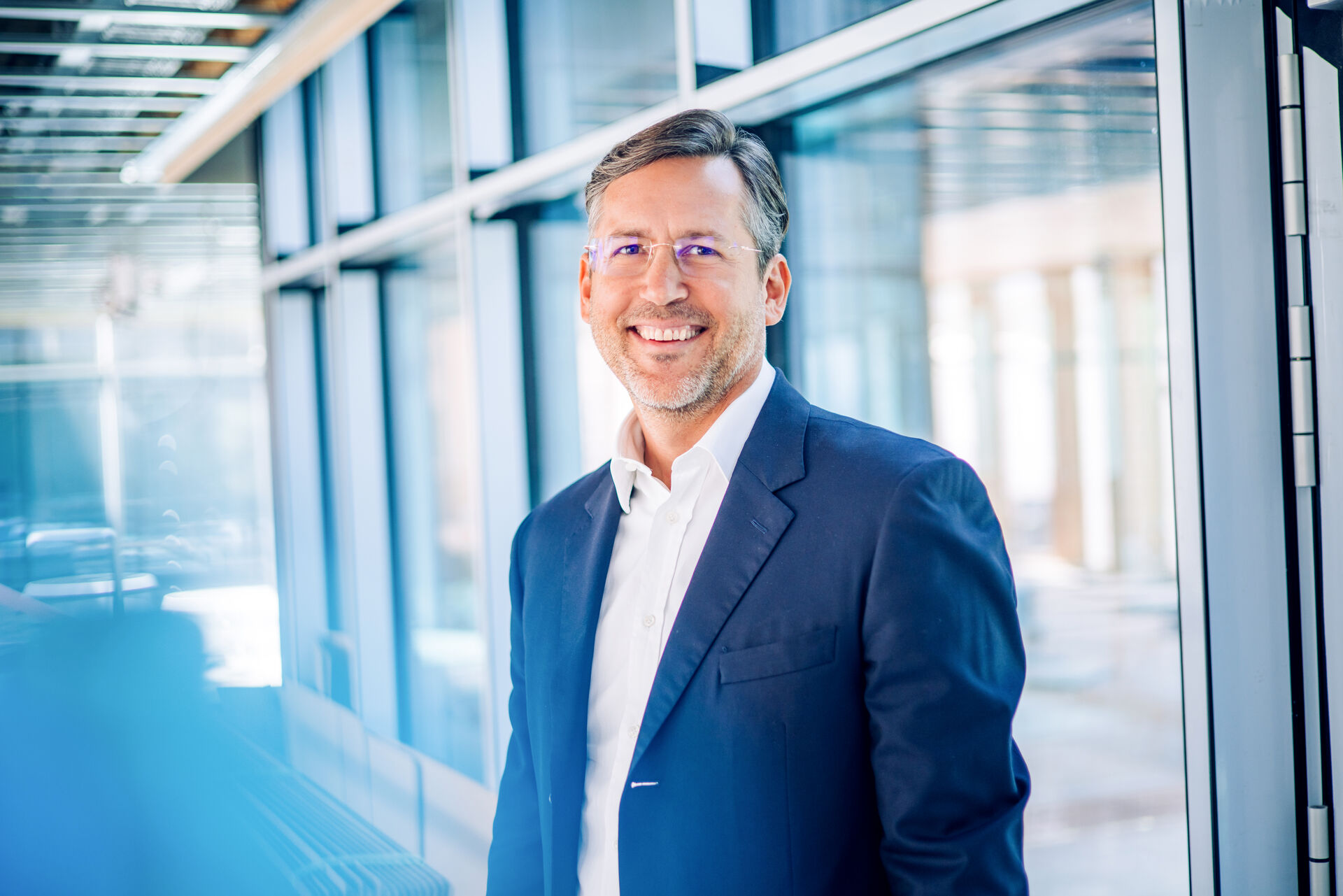Mr Gerstenmayer, what is your overall assessment of the financial year 2021/22?
A. Gerstenmayer: Given our results, it was of course a fantastic year: when revenue increases by 34% and business develops so successfully under critical conditions, you can only be satisfied and applaud the employees of AT&S for their achievements. We built the largest plant in our company’s history to date in Chongqing during the pandemic, and we started production ahead of schedule and within the budget. That shows the strength of our organisation: we are capable of achieving our goals, even in a difficult environment. In doing so, we remain a dependable partner for our customers at all times.
One of the reasons for our success today is that we set the course early. We decided to enter the substrate market in 2013, started volume production in 2016 and continued to pursue this path despite initial difficulties. As a result, substrate production has gradually become our most important business segment.
P. Schneider: I would like to add something here: AT&S has done many things right over many years. That is paying off now. Even when the market for IC substrates was struggling, AT&S continued to focus on the long-term perspective and invested heavily in the production sites. And now we can reap the rewards of our work because we are present as a quality leader during a market boom – side by side with companies which have been on the market for decades.
Speaking of production sites: Mr Schröder, when building additional capacity, you chose Kulim in Malaysia as a location last year. Why?
I. Schröder: First of all, Kulim has been a centre of semiconductor-related production for decades. A number of high-tech electronics companies are based there, so we don’t have to start from scratch when setting up the infrastructure. A working supply chain is in place. Many of the materials we need are produced in Asia. Another reason is the close proximity to our customers. A large part of our products is processed in Southeast Asia. And thirdly, we also receive great support from the authorities in creating the framework conditions. The Malaysian government and Malaysian Investment Development Authority MIDA, which represents the government, actively contribute to eliminating potential obstacles.
A. Gerstenmayer: What is more, it is easier to recruit adequately qualified professionals and engineers in an environment where microelectronics are already at home. Competition is of course also greater. But we are confident that we can attract and retain the employees we need with the right corporate culture. Our close cooperation with universities and other educational institutions in the region will also help us in our efforts.
Tell us about the status quo in Kulim. How is the development of the site coming along?
I. Schröder: The project is on schedule – despite additional official requirements and challenges due to corona. Just a few words about the overall project: during the first project phase, we will invest approximately € 1.7 billion in Kulim within six years and create up to 6,000 high-tech jobs. Phase 1 comprises the construction of two substrate plants including the periphery by 2024. During this first phase alone, we will create buildings with a total of 280,000 sqm on an area of 235,000 sqm, build 120,000 sqm of cleanrooms, use 600,000 m3 of concrete and lay 620 km of lines and 250 km of cable. Over the past few weeks we have already had more than 1,300 workers on the construction site. As the project progresses, this number will increase to more than 4,000 workers. These are impressive figures, illustrating that a demanding and very exciting project lies a ahead of us.
We are also making good progress at our other production sites. Plant III in Chongqing is in the middle of ramp-up. The objective for this calendar year is to have lines 2, 3 and 4 in full production. The required build-up of resources is on schedule. In Korea we have completed a new building, technically upgraded the machines and in terms of processes created the basis for stronger in-house production. In India – where there are currently no construction activities – we haven significantly increased productivity despite massive pressure on the supply chains.
How do you see the market development and where will market opportunities arise for AT&S?
A. Gerstenmayer: In the current environment, IC substrates will remain the central growth and technology drivers. We also expect impetus for our business from the area of modules. Establishing the corresponding production in Chongqing II also proved to be the right decision at the right time. The growth rates will not be as high as for IC substrates yet. They will, however, allow us a respectable positioning in this product segment as well. Likewise, the printed circuit board market will also develop positively, at a rate between three and five percent. But we are more selective in this area and primarily invest in technology upgrades and maintaining our position as one of the industry’s technology leaders. As far as modules and module integration are concerned, we are temporarily slowing the pace down due to the expansion in other areas, and focus on R&D projects. Nonetheless, this area remains an important part of our strategy. As soon as sufficient resources become available again, we will address this topic more intensively.
I. Schröder: Intensive R&D work will remain the foundation of our development. Today, we invest nearly ten percent of our revenue in research and development. And we will continue to do so in order to maintain and expand our technological positions. We want to be even better prepared for future requirements in order to support our customers to the best of our abilities.
AT&S now has long tradition of close cooperation in R&D with universities.
A. Gerstenmayer: Yes, and that is a very conscious choice: working with universities and other research institutions gives us access to the latest knowledge and future high achievers. We also continued to expand our cooperation network last year. In the area of power electronics we are now collaborating with the Indian Institute of Technology in Delhi (IIT). In the USA, we entered into a cooperation with Virginia Tech for the development of power modules. In China, we revived our cooperation with Shanghai University. In Austria, we are participating in the establishment of Silicon Austria Labs, the country’s non-university research hub.
I. Schröder: Leoben will also gain importance for our future research work. We are currently building a research centre for IC substrates and packaging technologies here, including a small series production facility. This project is nothing less than a milestone for technological advancement in Europe. After all, we strongly believe that in addition to chips, packages will also play a central role in increasing the performance of components in the future.
The markets are currently playing in favour of AT&S. How do you address this situation in terms of sales strategy?
P. Schneider: Capacity requirements are currently particularly high in the substrate segment. Here, we are asking ourselves who we want to collaborate with – and how closely. We decide that on a long-term basis. That is to say, we are not interested in quick profits, but rather in the long-term perspective of collaboration. Does the positioning fit with ours? What future do the products have? Can we make investments in partnership with our customers? This long-term philosophy, as opposed to maximum profit in the short term, is deeply rooted in the DNA of AT&S.
A. Gerstenmayer: Irrespective of that, we have succeeded in further improving our profitability by consistently passing on raw material and energy price increases, charging market rates for services and extras we provide and optimising our product portfolio. In the future we will put an even stronger focus on high-margin products and technologies in line with the premium brand positioning of AT&S. This does not mean that we neglect our traditional products. But we must also achieve an appropriate contribution to earnings in this area.
Is AT&S using the growing market demand to build new customer segments?
P. Schneider: So far, we have always built on our core markets when looking for new customers. We also consider the long-term perspective from the very beginning in this context. This requires a good understanding of market attractiveness and the existing or achievable competitive position. Sales, sales engineering, business lines and market intelligence work hand in hand here.
AT&S has recently restructured its sales organisation. How is that working out?
P. Schneider: We introduced a regional sales structure and separated strategic marketing from operational sales in order to accelerate the development in our regional markets. These measures have already produced the first results. Most recently we made some good progress in the USA. In terms of coverage we are in a better position today than even a few years ago. The establishment of a distributor network also helped us in this respect. Based on this setting, we will be able to develop successfully by our own strength – also during difficult market phases.
Sales structures are one thing. But it also takes good teams to be successful in the market ...
P. Schneider: ... and we have good teams. I am very proud of our customer relations. We have an excellent technical sales team. Also with respect to commercial issues and contract law matters we are self-confident and on an equal footing with our customers in every way. Our good position with customers is the result of the professionalisation of our customer relationships, which we are expanding with our growth every day. Training, additional staff – we put great effort into becoming better every day. The reputation which AT&S has built over many years is another aspect that pays in the collaboration with our customers. Time and again our customers tell us that our performance is exceptionally good – from the development of new products to technical consulting and final delivery.
GOOD REPUTATION CERTAINLY ALSO HELPS ATTRACT NEW EMPLOYEES. YOU WILL ADD MORE THAN 10,000 JOBS IN THE COMING YEARS.
A. Gerstenmayer: That is truly a mammoth task. Not only do we have to recruit new people, we must also train, integrate and retain them – and all of this in a time when competition for employees is fierce all over the world. Nevertheless, it is working quite well for us at present – supported by intensive employer branding to actively position ourselves as an attractive brand. People see that we are a rapidly growing company which offers its employees very good opportunities. People from 52 countries now work at the location in Leoben. Such multicultural structures are particularly exciting for young people. They enjoy working in dynamic teams where they can develop professionally and as a person. That gets around and obviously makes us attractive.
Today, ESG matters are increasingly important to young people in particular, but also customers. How is AT&S doing in this area?
A. Gerstenmayer: This area is anything but new to us and has been an integral part of our business operations for many years. We are interested in saving energy, water and materials as well as in recycling – notonly for environmental reasons, but also from a cost perspective. There is a positive correlation here. And there are similar correlations for other ESG topics, for example diversity. The diversity of employees is a necessary prerequisite for us to be successful as an international corporation.
I. Schröder: To give you some examples of environmental aspects, right from the start, we are building our new location in Kulim, Malaysia, in a way that will enable us to achieve carbon-neural production in the long term. We aim to reduce water consumption by up to 30% from the beginning – the same also applies to our new R&D centre in Leoben. But we are also doing well as a group: we increased the share of renewable energies to 56% in the past financial year and are clearly ahead of our plan.
Let’s talk about further process optimisation: what is AT&S’s approach?
I. Schröder: Rapid growth at different locations always confronts production and organisation with challenges – the key word is scalability. That is why it is essential to create the basis now to push topics such as transparency, flexibility and harmonisation in a clearly structured process landscape. A uniform end-to-end process landscape is a central lever to achieve this. This means that we closely coordinate all chronologically and logically consecutive sub-processes within our group and streamline them in such a way that we can produce highly efficiently and optimally meet our customers’ requirements. Along with that, we drive digitalisation in all processes, for example through artificial intelligence and pattern recognition in elaborate inspection and control processes. This way, an even faster and earlier response to potential process deviations can be achieved. For this purpose, we are establishing data structures and are building a data landscape.
By the way, this does not mean that our production is not already very good and highly efficient. Our processes are already so good today that they are very well received by our customers because we set standards in the market this way. In the future, we will align even more closely to processes known from the semiconductor industry. To do so, we are working on new ideas and concepts which will give us cost and competitive advantages in the long run.
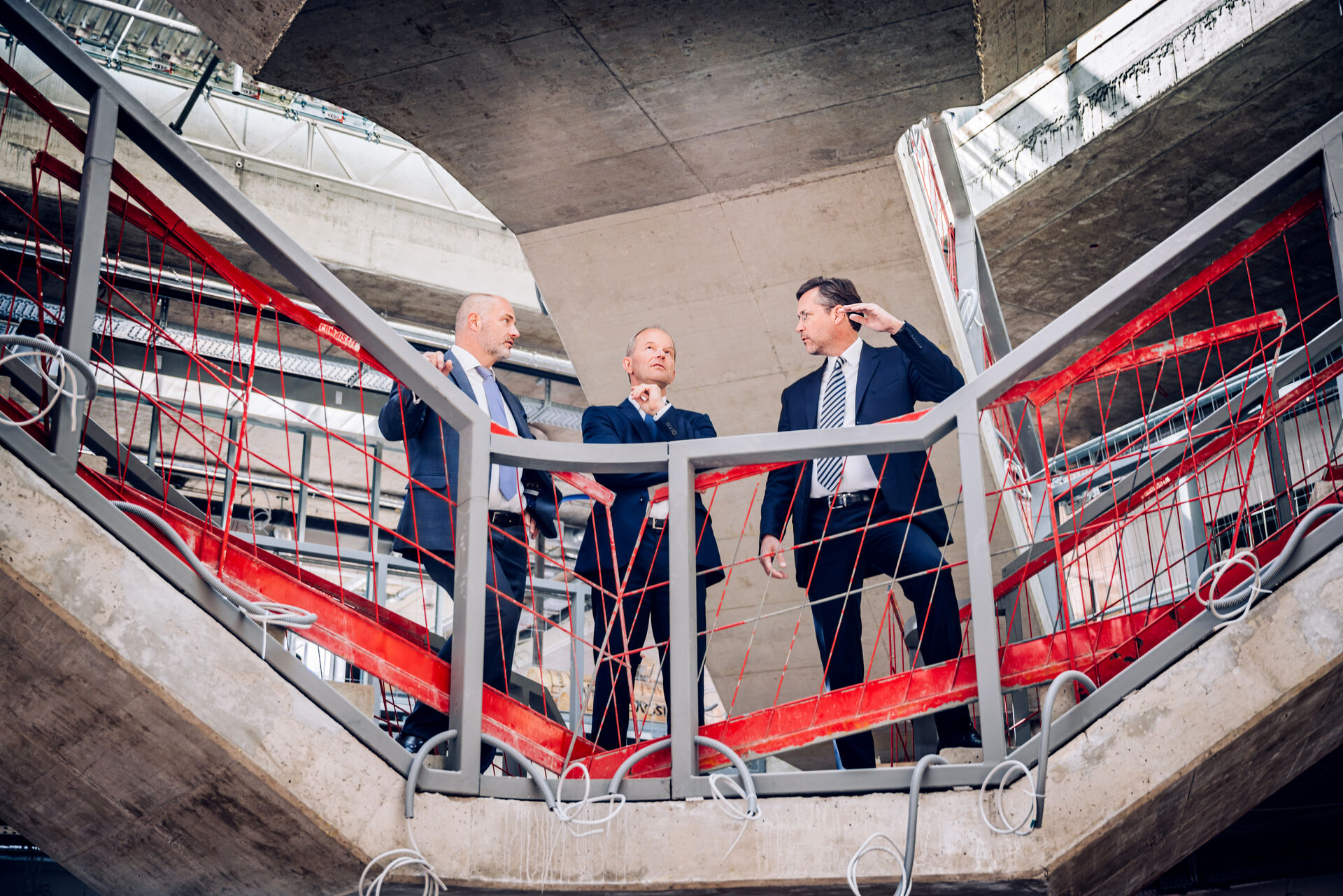
Let’s talk about finance again: AT&S is investing large sums. How stable is the financing of these investments?
A. Gerstenmayer: Despite the large investment volumes, we have a stable capital structure and sufficient liquidity – both for our current operating activities and for the planned investments. We can rely on proven sources for additional financing, such as issuing promissory note loans, taking out bank loans and using credit lines based on guarantees by large Austrian and European banks. The capital market has great confidence in AT&S, which was also demonstrated by the successful placement of our hybrid bond in January. Cash flow is also a reliable source of financing for us: EBITDA of € 349 million has a massive impact on our internal financing strength. Moreover, based on bilateral agreements, we have also managed to involve our customers in our new investments to a significant extent. This is a completely new and very powerful way of implementing projects.
From a shareholder perspective, a successful financial year is also reflected in an attractive dividend.
A. Gerstenmayer: Against the backdrop of the very good business development, we think that sharing this success appropriately with our shareholders is the right thing to do – despite the current phase of massive investments. Therefore, the Management Board and the Supervisory Board will propose a dividend of 90 cents per share to the Annual General Meeting on 7 July; to be precise: a basic dividend of 78 cents and a special dividend of 12 cents per share. This means that the basic dividend has doubled compared with last year.
What can you tell us about the business and financial outlook?
A. Gerstenmayer: We are on track with all topics, both strategically and operationally, and so we were able to confirm our previously communicated forecast for both the short-term and medium-term guidance. We are aiming for revenue of roughly € 2 billion and an adjusted EBITDA margin of 23 to 26% for the financial year 2022/23. The expansion of the production capacities in Chongqing, Kulim and Leoben will increase our revenue to € 3.5 billion and the EBITDA margin to 27% to 32% in the financial year 2025/26 if things develop as planned. Until then, the equity ratio may temporarily fall below the target of more than 30% due to currency effects and volatilities.
P. Schneider: On the sales side, we continue to focus on expanding our key account base. In the foreseeable future, we aim to support a handful of selected market and technology leaders in the chip industry in a wider sense. In recent months we have succeeded in building further excellent business relationships in addition to our established customers in the semiconductor industry. These are the best prerequisites for our continued success in the longer term.
I. Schröder: With our new location in Malaysia, we are in a good starting position to achieve our goal of reaching the top 3 IC substrate manufacturers. By 2024, we will have built the largest production site for this segment in the industry – with an option to further increase capacity. The location and the volume will give us a competitive cost position, which is important in case competition in the market intensifies again.
